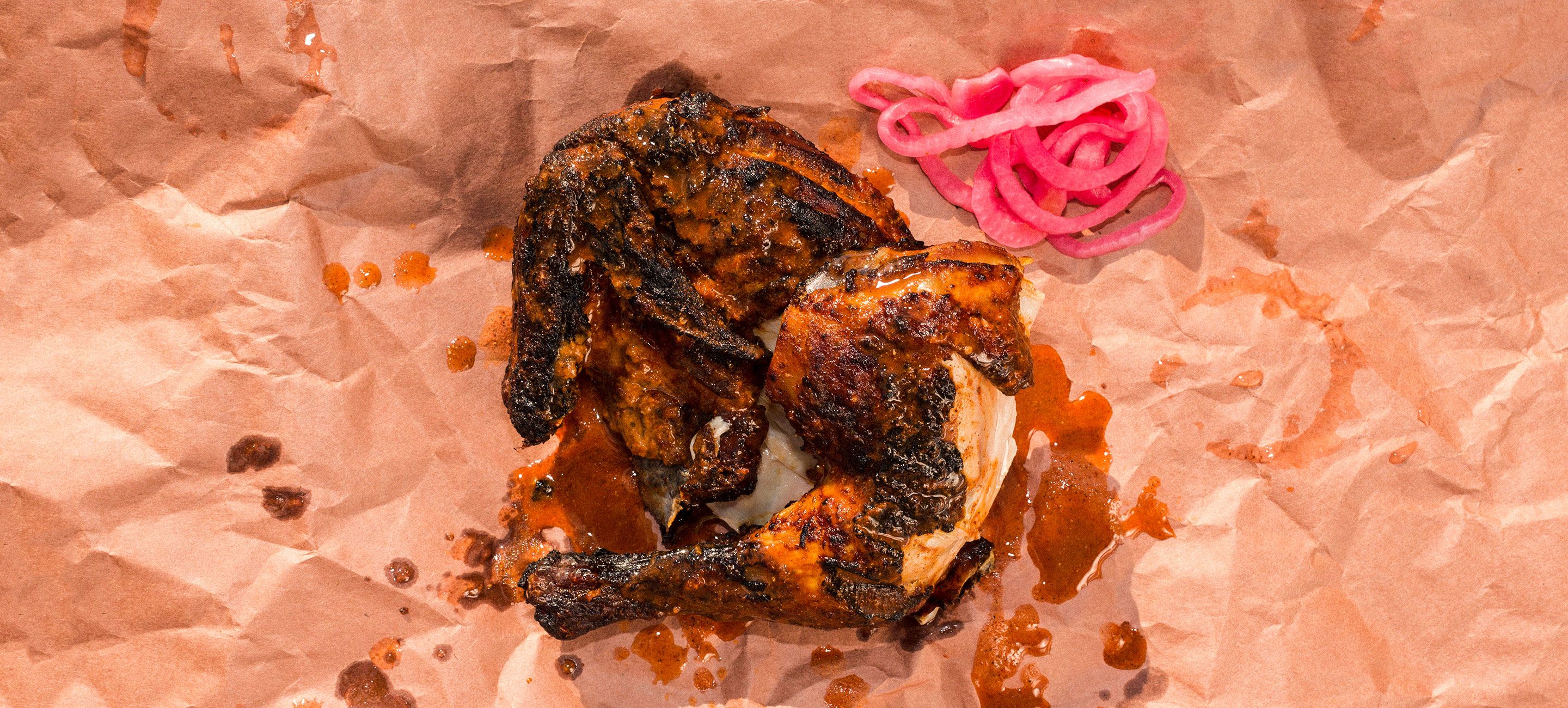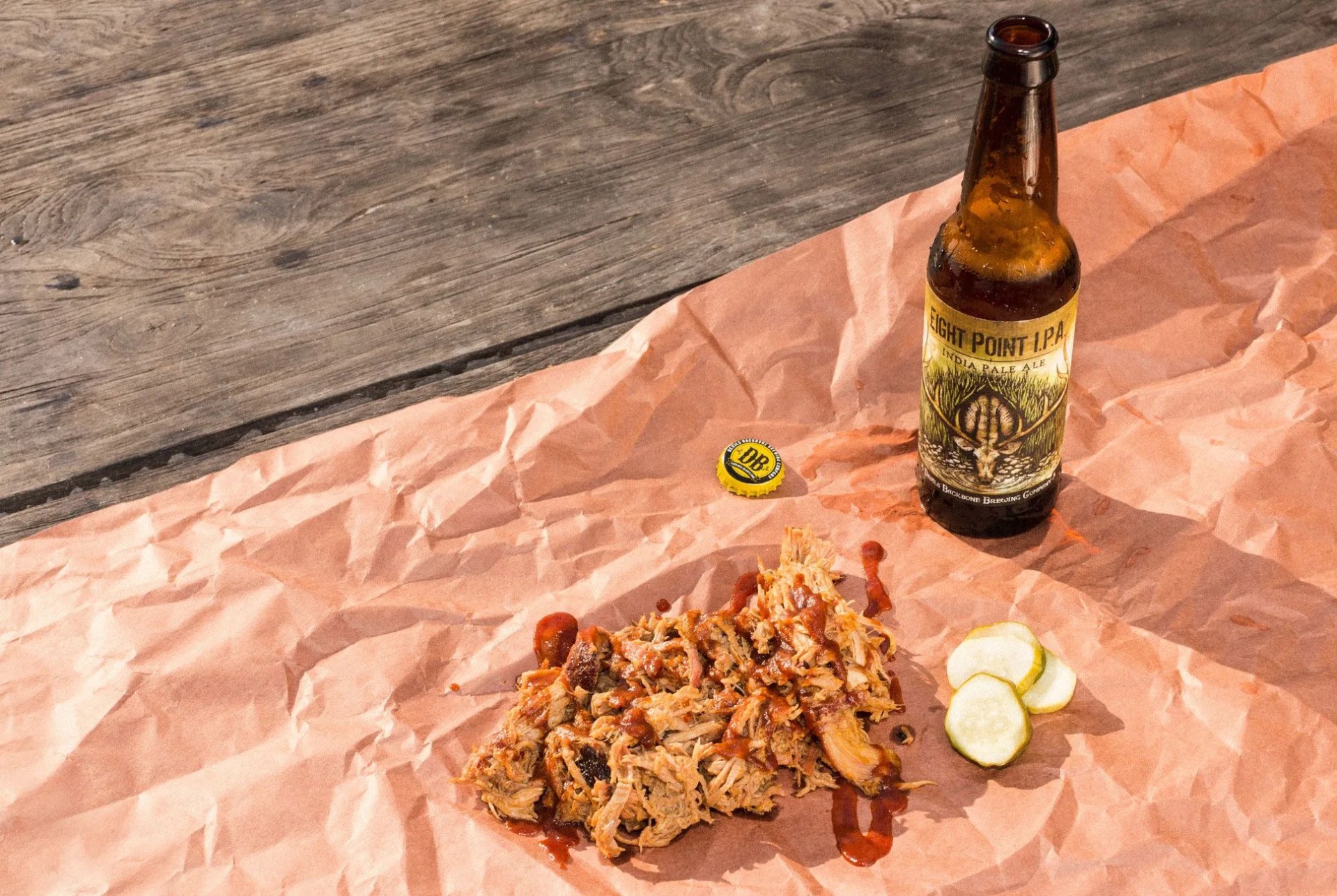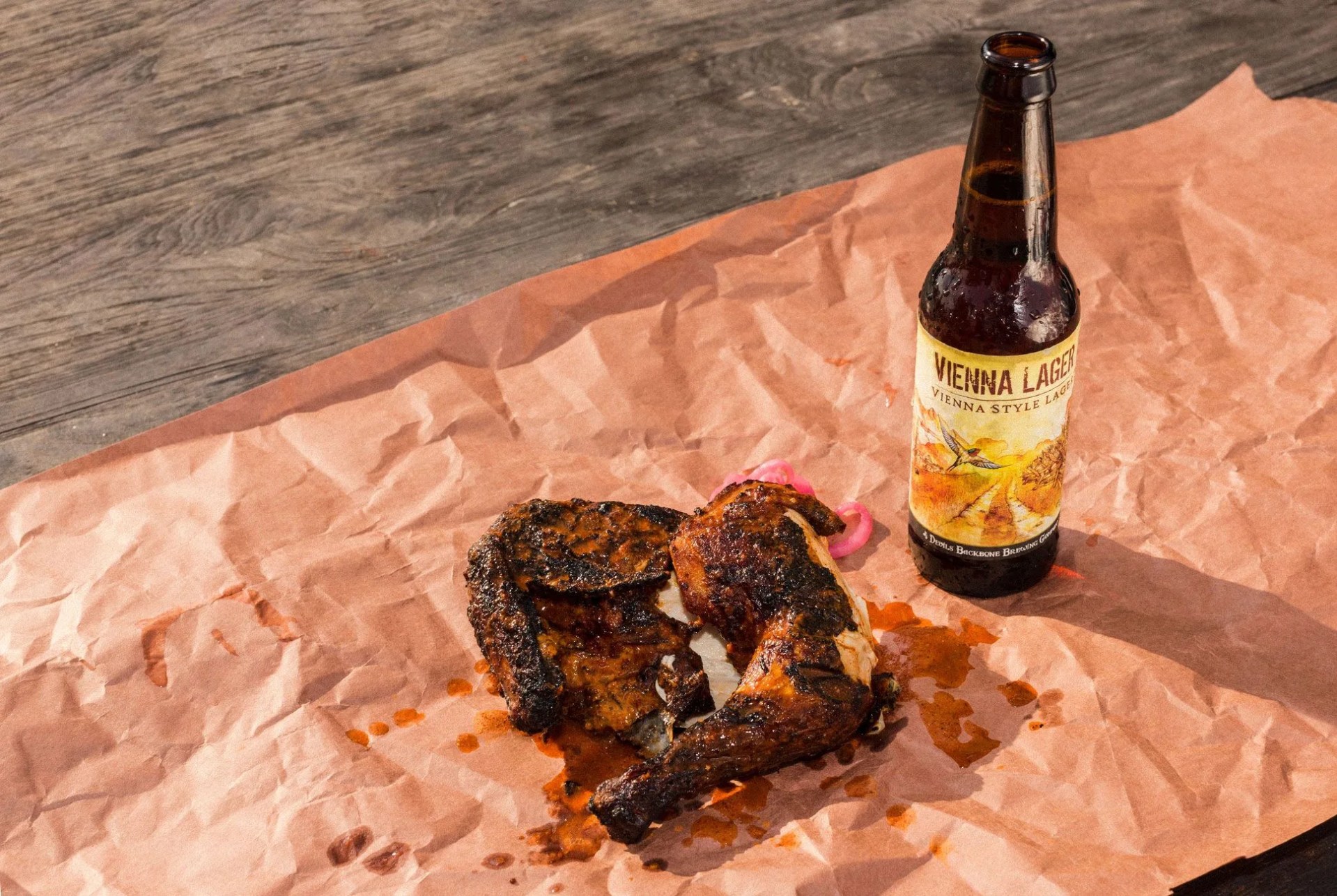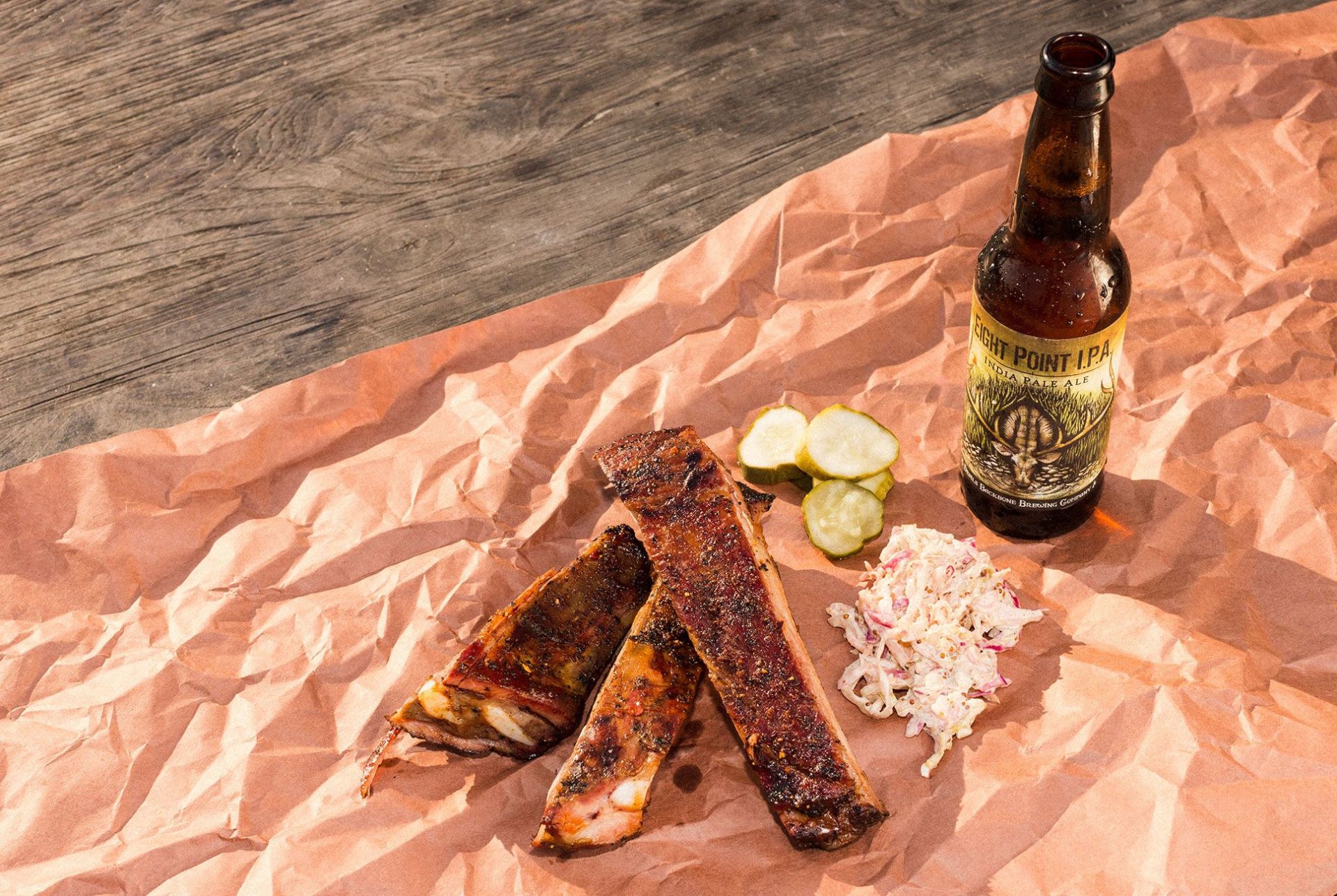
Barbecue takes many forms. Texas favors brisket and shuns sauces, Memphis slathers pulled pork in a tomato- and vinegar-based emulsion, western North Carolina serves pork shoulder with a sidecar of sauce. Yet all barbecue, regardless of sauce or meat or smoking wood employed, disseminated from Virginia.
“Virginia, being the birthplace of colonial America, became a model for southern and western settlements, because Virginians worked out how to survive in the New World,” says Joe Haynes, barbecue authority and author of Virginia Barbecue: A History and the upcoming Brunswick Stew: A Virginia Tradition (publishing this October). “As these Virginians moved, out west and to the south, they took traditions with them — cornbread, hoecakes, stews, barbecue — and modified them based on what was available in their new home. That’s how Southern barbecue developed, and how each place has its own way of putting a twist on it.” In his first book, Haynes traces the history of barbecue back to the early 1600s, to the fusion of the mother sauce — a mix of vinegar, salt and red pepper — with the Powhatan tradition of roasting meat on a wooden grill.
Yet while Virginia is the birthplace of barbecue, it’s not defined by a singular style. As in other states, regional styles arose in accordance with local ingredients. The Southside of Virginia — near Jamestown, extending as far west as Petersburg and as far north as Richmond — specializes in a tomato- and vinegar-based sauce with a hint of mustard, richer and less tangy than the sauces in neighboring North Carolina.
Farther north, into Central Virginia, sauces grow sweeter and more tomato-driven, with a mixture of spices like cloves, ginger and cinnamon. “Where the regional styles came from, and how they got to us today, [was guided by] what was successful and readily available,” Haynes says. “Other barbecue cooks would try to emulate what successful vendors were doing,” and regional styles took root from there. Oak or hickory wood are traditionally used to impart flavor; smoking pork is most common, though beef — ribs, chuck and sirloin — is also embedded in the canon of Virginia barbecue.
There are, however, outliers. In the Shenandoah Valley, barbecue chicken — spatchcocked, rubbed with spices and glazed with an oil- and vinegar-based dressing — reigns. Barbecue sauces in Northern Virginia are often infused with fruit, making them sweeter. A now-defunct restaurant in Chesterfield, just outside of Richmond, pioneered a red sauce with a touch of peanut butter that was glazed on pork ribs. “You can’t recognize it as peanut butter, but it really, really highlights that pork flavor, like a strong background,” Haynes says.
Below, find four regional sauces that define the Virginia barbecue — both forebears of broader Southern barbecuing practice, and innovations pushing the tradition forward today.




